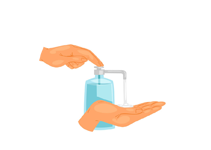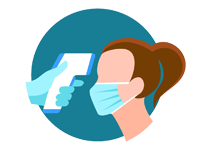Glucagon
Glucagon is a hormone-based medication used to treat severe hypoglycemia (low blood sugar), particularly in diabetic patients who are unconscious or unable to consume sugar orally. It works by rapidly increasing blood glucose levels, making it a life-saving emergency treatment. Glucagon is also used in certain diagnostic procedures involving the stomach and intestines. Available as an injectable, it must be administered promptly in emergencies under proper guidance or supervision.
Uses of Glucagon
- Emergency treatment of severe hypoglycemia
- Diagnostic aid in gastrointestinal procedures
- Used when oral or intravenous glucose is not feasible
How Glucagon Works
Glucagon increases blood sugar levels by promoting the breakdown of glycogen to glucose in the liver. This raises blood glucose levels quickly, helping to reverse severe hypoglycemia and restore normal body function.
Benefits of Glucagon
- Rapidly treats severe hypoglycemia
- Can be life-saving in unconscious diabetic patients
- Useful in specific diagnostic procedures
- Can be administered outside hospital settings with training
How to Take Glucagon
Glucagon is given as an injection either under the skin (subcutaneous), into a muscle (intramuscular), or into a vein (intravenous). It should be administered immediately in cases of severe hypoglycemia and followed by medical attention. Caregivers should be trained to use the injection kit correctly.
Type of Dosage Available
- Injection (powder for solution)
- Pre-filled injection kits
Side Effects of Glucagon
- Nausea and vomiting
- Increased heart rate
- High blood pressure
- Skin rash or itching
- Injection site reactions
Safety Advice
- Use only under medical guidance or emergency protocol
- Store in a cool, dry place and follow label instructions
- Ensure caregivers are trained in proper usage
- Inform your doctor of allergies or liver conditions
- Not suitable for use in pheochromocytoma or insulinoma cases
Frequently Asked Questions (FAQs)
Q. What is Glucagon used for?
A. It is mainly used for emergency treatment of severe low blood sugar in diabetic patients.
Q. How is Glucagon administered?
A. It is injected under the skin, into a muscle, or into a vein depending on the situation.
Q. Can Glucagon be self-administered?
A. It is typically administered by caregivers or trained individuals in emergency situations.
Q. Does Glucagon have any serious side effects?
A. While most side effects are mild, serious reactions may occur in rare cases and should be reported immediately.
Q. Should I seek medical help after Glucagon is given?
A. Yes, medical attention should be sought immediately after administration to monitor recovery and prevent recurrence.
Download India's most affordable pharmacy app
- Compare with medicine prices
- Save upto 90% on your medicine bills

Temperature Controlled storage and delivery

Regular Sanitization

Disinfected Packaging














 Added!
Added!